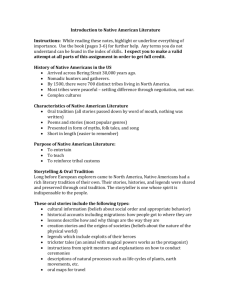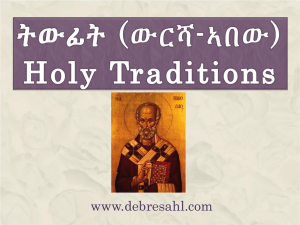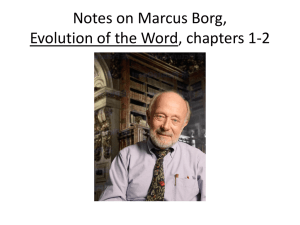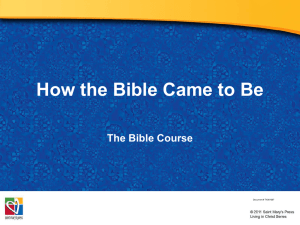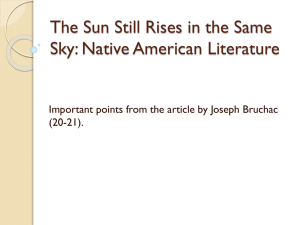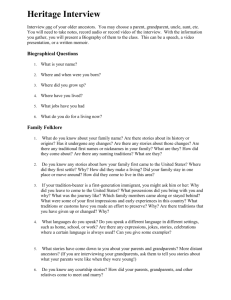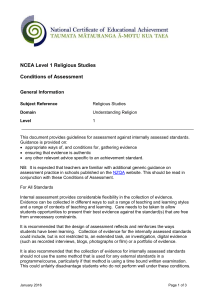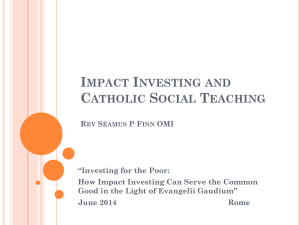Meeting Minutes and Notes from Fr. Eric`s talk.
advertisement
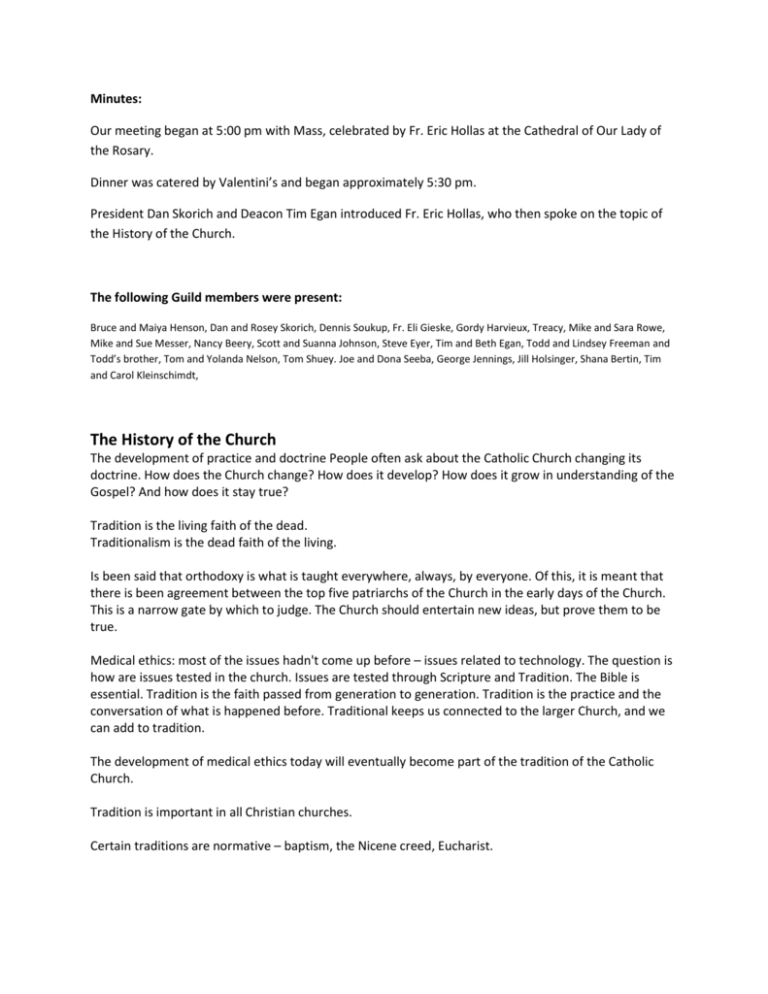
Minutes: Our meeting began at 5:00 pm with Mass, celebrated by Fr. Eric Hollas at the Cathedral of Our Lady of the Rosary. Dinner was catered by Valentini’s and began approximately 5:30 pm. President Dan Skorich and Deacon Tim Egan introduced Fr. Eric Hollas, who then spoke on the topic of the History of the Church. The following Guild members were present: Bruce and Maiya Henson, Dan and Rosey Skorich, Dennis Soukup, Fr. Eli Gieske, Gordy Harvieux, Treacy, Mike and Sara Rowe, Mike and Sue Messer, Nancy Beery, Scott and Suanna Johnson, Steve Eyer, Tim and Beth Egan, Todd and Lindsey Freeman and Todd’s brother, Tom and Yolanda Nelson, Tom Shuey. Joe and Dona Seeba, George Jennings, Jill Holsinger, Shana Bertin, Tim and Carol Kleinschimdt, The History of the Church The development of practice and doctrine People often ask about the Catholic Church changing its doctrine. How does the Church change? How does it develop? How does it grow in understanding of the Gospel? And how does it stay true? Tradition is the living faith of the dead. Traditionalism is the dead faith of the living. Is been said that orthodoxy is what is taught everywhere, always, by everyone. Of this, it is meant that there is been agreement between the top five patriarchs of the Church in the early days of the Church. This is a narrow gate by which to judge. The Church should entertain new ideas, but prove them to be true. Medical ethics: most of the issues hadn't come up before – issues related to technology. The question is how are issues tested in the church. Issues are tested through Scripture and Tradition. The Bible is essential. Tradition is the faith passed from generation to generation. Tradition is the practice and the conversation of what is happened before. Traditional keeps us connected to the larger Church, and we can add to tradition. The development of medical ethics today will eventually become part of the tradition of the Catholic Church. Tradition is important in all Christian churches. Certain traditions are normative – baptism, the Nicene creed, Eucharist. Some traditions are dispensable: The Rule of St. Benedict – stated that monks must have only one tunic; however, if you lived elsewhere that could be adapted. What is at the core and which are changeable? Scripture helps determine what is dispensable versus indispensable. Most mainline churches have four ways of reading the Scripture: the literal, the allegorical, the spiritual, and the anagogical (the meeting as it relates to the end times). St. Augustine stated early on that he could not be Christian if the scripture was only interpreted literally. The various ways of interpreting scripture were the key to his conversion. Example of a difficult literal interpretation is from the Song of Songs in which the beloved is described her neck being the Tower of Babylon. Scripture itself is a product of tradition – the New Testament is the story of the Church developing it's tradition. If the Catholic Church never changed, we would all be Jewish kosher circumcised converts. However, gentiles wanted to join the Church, and the disciples had to decide – inspired by the Holy Spirit – whether they needed to continue observing circumcision and kosher dietary laws. The New Testament itself contains tradition and is a product of tradition. The choice of the books that belong in the Bible was decided through Church synods and councils. Jesus didn't lay out the structure of the Church or give us a Bible. What traditions from the New Testament do we need to continue or not continue? One that was felt dispensable was St. Paul's command that women must wear hats. We need to continue to study the Bible in a scholarly way. We need to keep translating interpreting the Bible. The Bible needs to be studied in historical and critical methodology. Some continue to only study with a literal lens: in Islam, the Koran was written before grammatical markings occurred in their language. Two dots added to one word can mean the difference between the fallen martyrs receiving 12 white raisins or receiving 12 virgins. Even families have traditions. Tradition carries great meaning for us and reminds us of the times things were done differently. An example could be that of communion in the hand being even older than receiving communion on the tongue. Tradition helps us understand why others do things differently. As an example, armaments from the Middle Ages: the crossbow was once felt to be immoral as it would make a surf to be at the same level of a nobleman or lord in that the surf could then kill the nobleman. We can use tradition to try to understand the morality of certain issues such as nuclear arms, economic issues, and modern medicine. As new issues come up and are entertained, at a certain point some of the questions are resolved and then become normative. And example of this is the language of the liturgy: the early liturgy was in Aramaic. Then Greek became the dominant language of the liturgy in the West. Even in Rome, the liturgy was practiced in Greek until Latin became the common language. Eventually Latin was no longer normative and the tradition was changed. Theology evolves as well – for example: the question of who is Jesus? The Gospels did not have a Creed and it took until the fourth century until He was truly defined as God and man. The Church is rightfully intolerant of intellectual inconsistency. An example of the evolution of moral theology: slavery. St. Paul stated that slaves should be obedient. In the Middle Ages the Church itself owned slaves. Catholics owned slaves in the United States through the 19 century. Then the Pope stated that slavery was immoral. How does the Church change? Slavery was in economic reality. In the 19 century, human rights trumped property rights. Another example – celibacy: in the early church priests were married. St. Peter was married, but St. Paul was not. Celibacy started with ritual purity. The monastic movement allowed religious to be independent of social ties. A celibate priest is independent of other social commitments. In the West, the Church was supported by landownership. If a priest married, the priest would leave his church to his son – and that worked rather poorly. The Church did not want aristocracy – she wanted priests who were appointed on the basis of merit. Napoleon "helped" the Church by taking all of the land. By the Council of Trent, celibacy had become normative. Celibacy is tradition and not doctrine. Other Catholic rites have allowed married priests. The justification for change is due to the Holy Spirit. And example of this is the Council of Jerusalem as described in the Acts of the Apostles. The Church maybe behind in issues of medical ethics, but it will get there.

